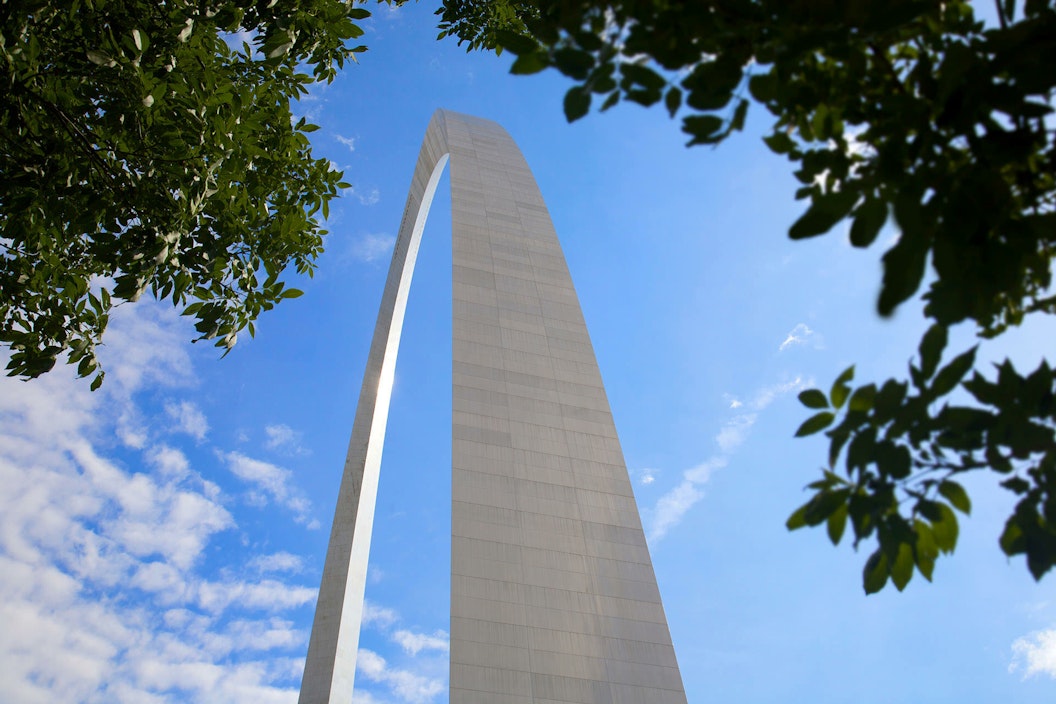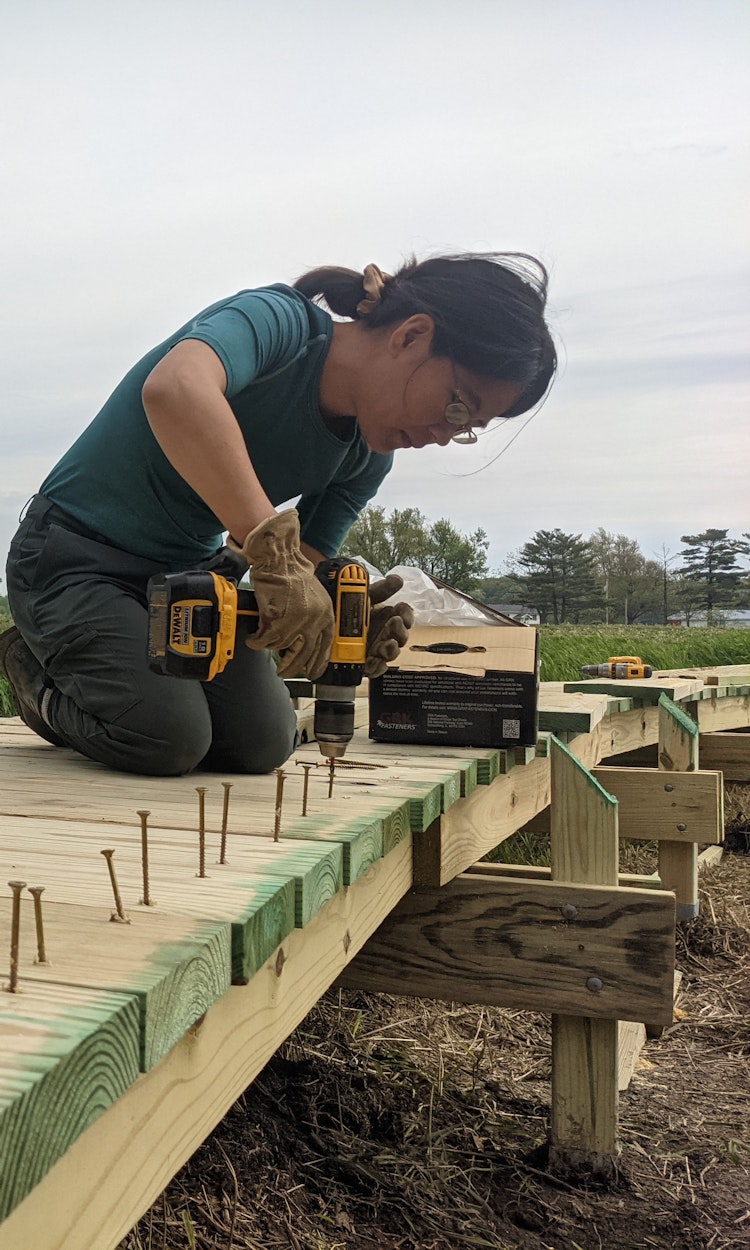
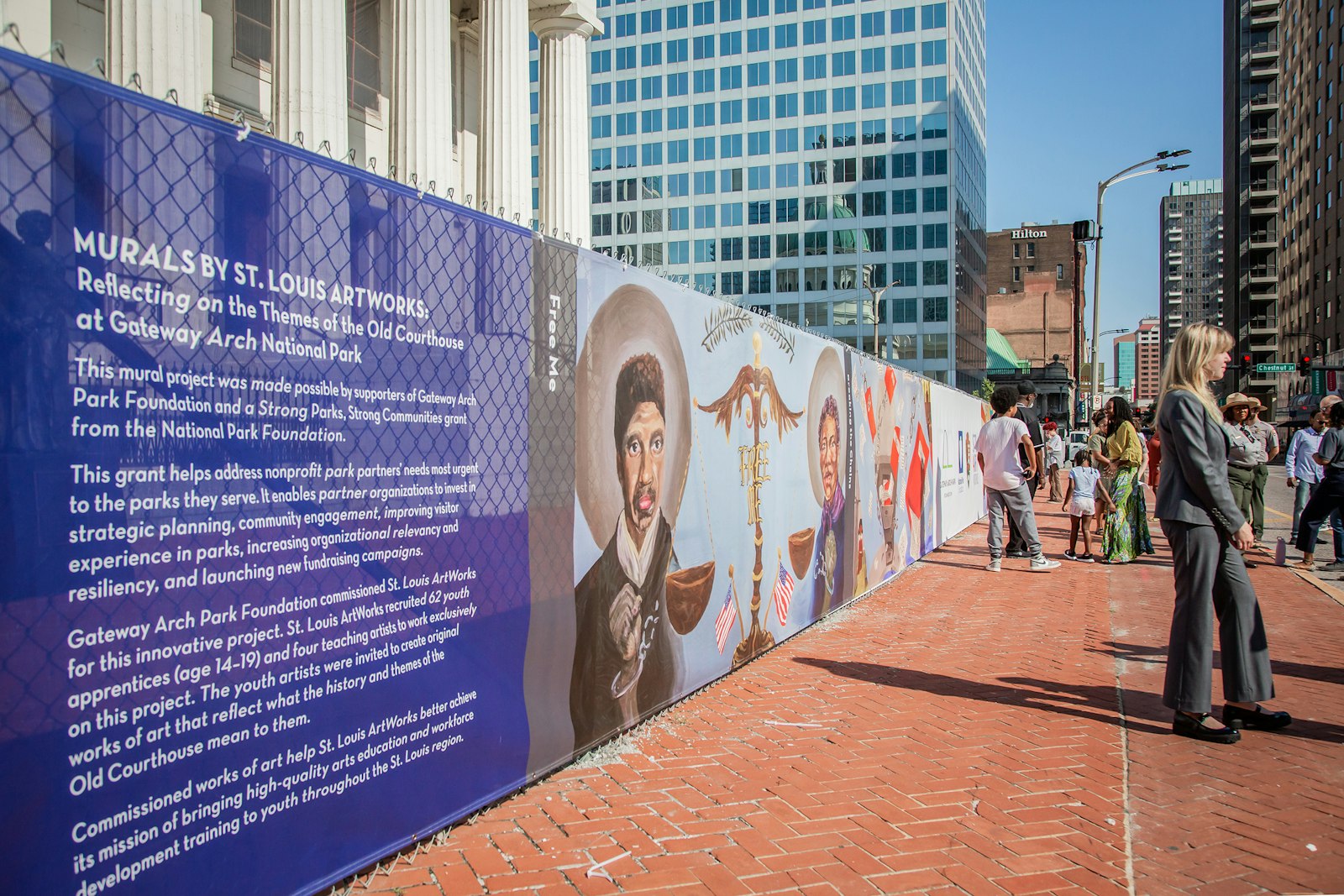
.
.
On September 23, 2023, a crowd gathered near the Old Courthouse in Gateway Arch National Park in St. Louis. It was the perfect fall morning with the sun shining brightly as a local high school marching band in twinkling uniforms paraded up to the ceremony to start the celebration. Following remarks from the park and its partners, a range of colorful murals were unveiled – a large-scale temporary public art installation designed by the community – and the crowd made its way to examine the murals more closely. This project, made possible by a National Park Foundation grant to Gateway Arch Park Foundation, was the perfect way to celebrate National Public Lands Day, honoring both the importance of our public lands and the potential they have to bring communities and partners together.
The Project
This unveiling was the culmination of months of collaboration between Gateway Arch Park Foundation, the official philanthropic partner for Gateway Arch National Park, and artists from St. Louis ArtWorks, a community-based arts education and workforce development organization. The project had dual aims: to create engaging public art interpreting the themes of the Old Courthouse while it’s closed for renovations and empower local youth and artists to create these public art installations.
A capacity building grant from the National Park Foundation’s (NPF) Strong Parks, Strong Communities program enabled Gateway Arch Park Foundation to embark on this cross-community initiative combining art, history, and community engagement to help breathe new life into a historic landmark under renovation.
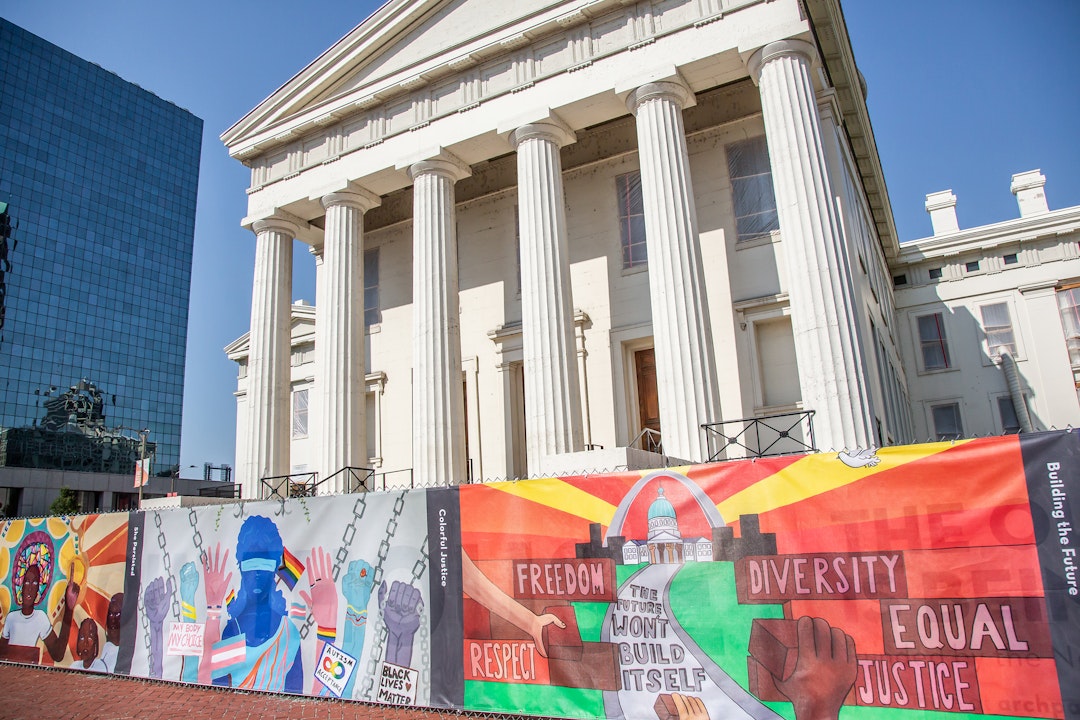
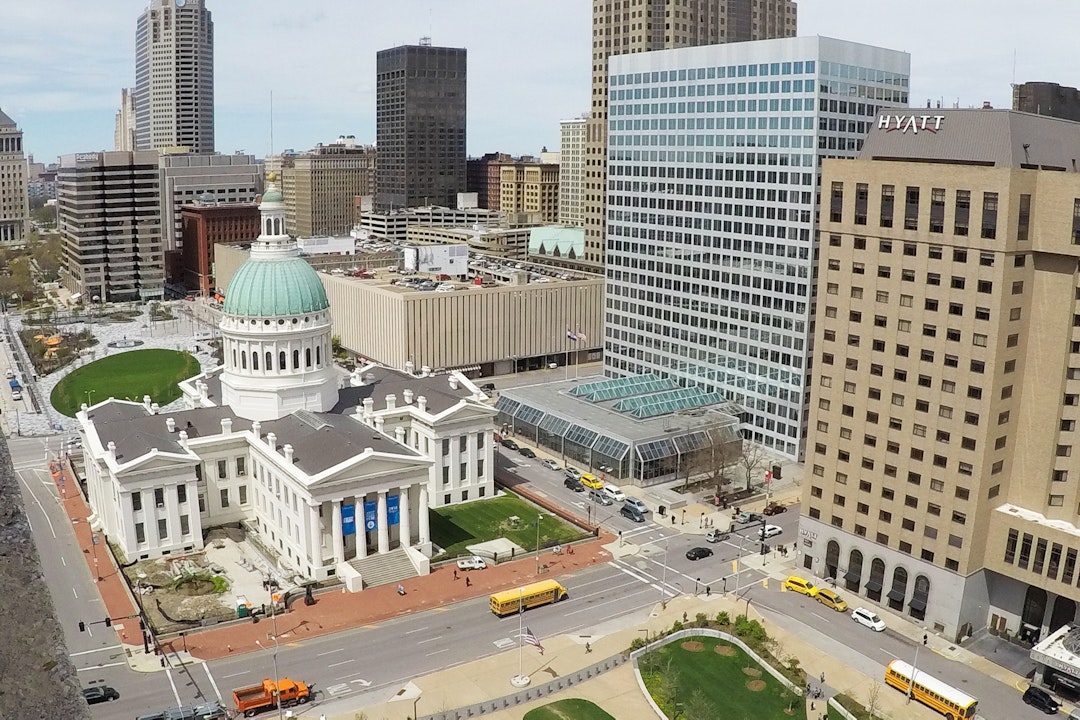
The Old Courthouse, the site of the Dred and Harriet Scott case and many other suits for freedom and part of Gateway Arch National Park, is undergoing a large-scale renovation and is temporarily closed to the public. During that time the murals will be front and center, installed along one entire block of construction fencing around the Old Courthouse.
The project’s scope evolved from its earlier iterations, ultimately expanding to include the participation of 62 youth apprentices and five teaching artists, culminating in the five temporary public art installations at the Old Courthouse. The project “was so much more than originally envisioned and it was inspiring to watch the youth involved create these thought-provoking murals,” said Amanda Goldsmith, director of philanthropy and external affairs at Gateway Arch Park Foundation. The paid apprentices collaborated on designing and creating the murals while simultaneously receiving training in financial wellness, presentation skills, environmental awareness, and more. The project provided participants with the unique platform to display their art at a national park site, but also the opportunity to learn more about many related career opportunities.
Reflecting St. Louis' Civil Rights Legacy
St. Louis has a rich history of milestones, challenges, and triumphs in the struggle for civil rights and social justice. This history reflects a journey from the depths of segregation and discrimination to the heights of activism and progress. The park’s Old Courthouse, built between 1839 and 1862, holds significant historical importance as the site of pivotal civil rights court cases, including Dred and Harriett Scott’s suit for freedom from slavery and Virginia Minor's fight for women’s voting rights.
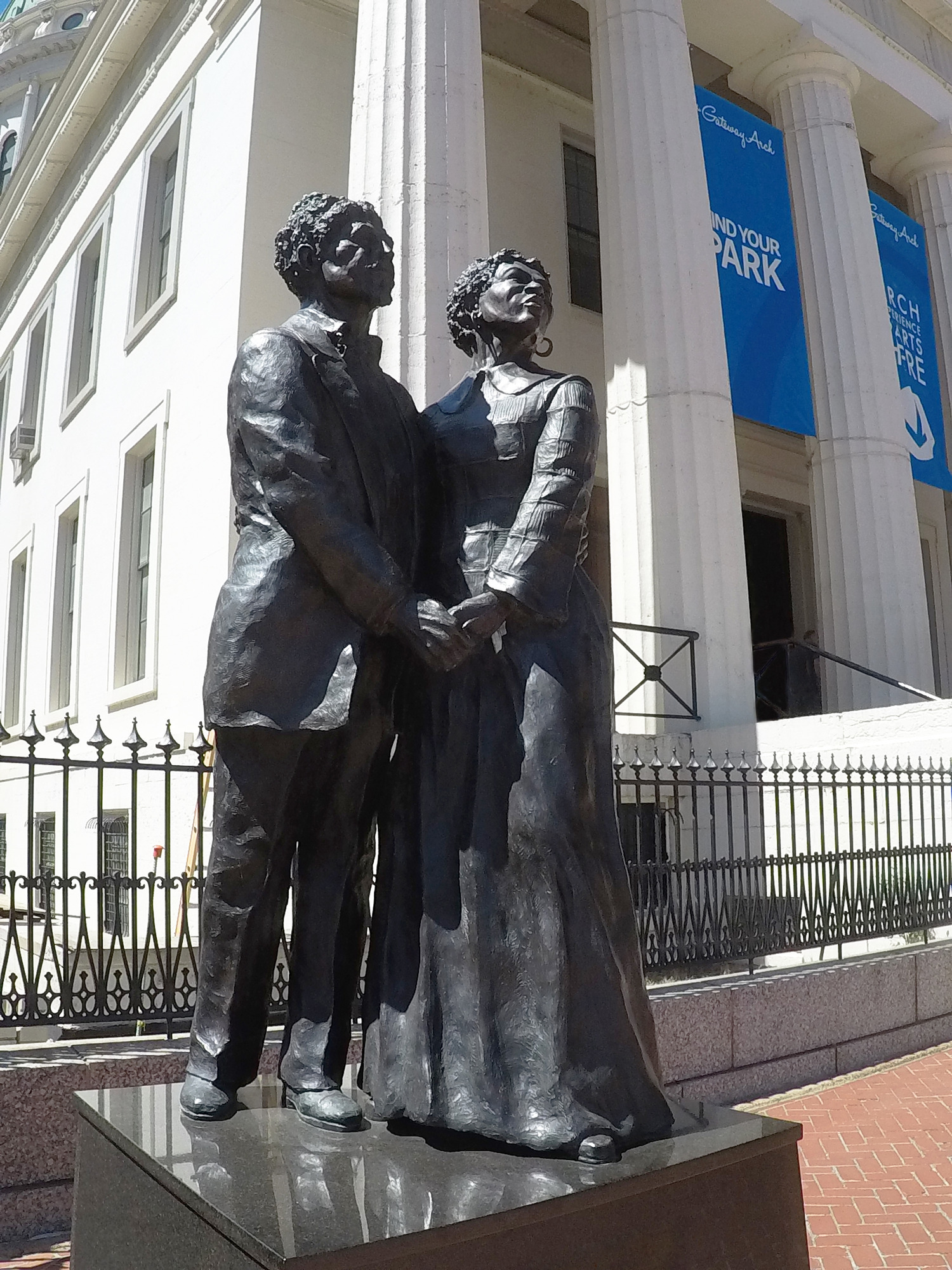
Gateway Arch Park Foundation saw the renovation of the Old Courthouse as an opportunity to incorporate public art that reflects the city's civil rights legacy. While significant strides have been made, challenges persist, making it crucial to continue the dialogue and efforts toward a more equitable and just society.
“One of the many special things about Gateway Arch National Park is the events that happened here that made such an impact on American history and even human rights globally,” said Pam Sanfilippo, program manager for Museum Services & Interpretation at Gateway Arch National Park. “This funding helps us engage youth in learning through creating and finding relevance to these important civil rights stories of our nation’s past.”
By integrating art into the renovation process and providing opportunities for young artists, the project helped foster creativity, skill development, and a sense of pride in the local community. The impact extends far beyond the temporary art installations alone – inspiring conversations, economic opportunities, and a lasting legacy that connects people with their collective history. “Public art helps shape the culture,” said Stajah Curry, one of the teaching artists involved in the project.
The story of the Old Courthouse's renovation is not just about construction and preservation; it is a tale of empowerment, creativity, and community impact. As the murals are seen by locals and park visitors alike, the striking artwork will continue to serve as a reminder of the transformative power of art and community partnerships in shaping a brighter future. Indeed, a simple construction fence can be transformed into a canvas of possibilities, reflecting the lessons of history, the potential of youth, and the harmony of community spirit.
Related Programs
-
 Strong Parks, Strong Communities
Strong Parks, Strong Communities

